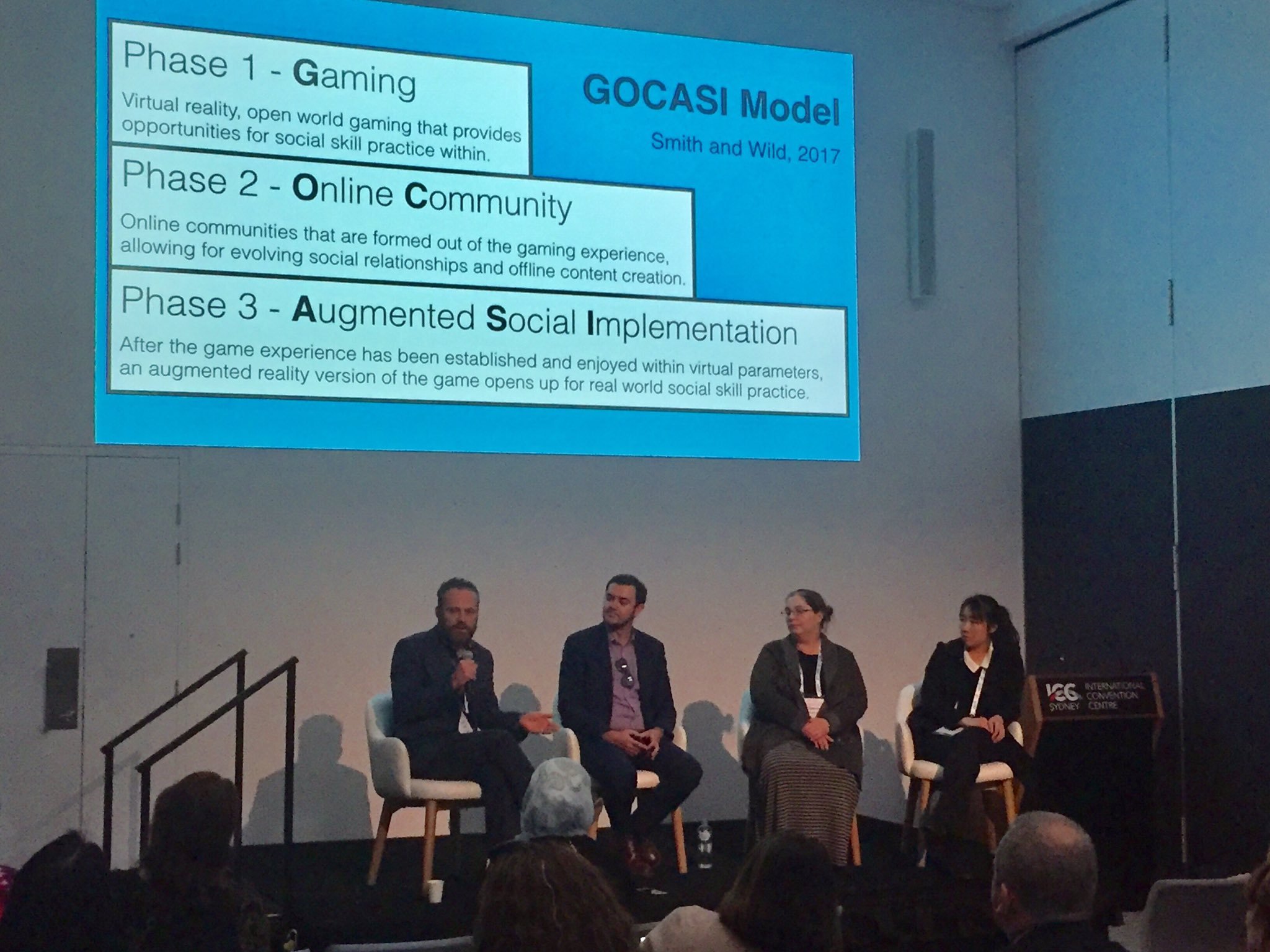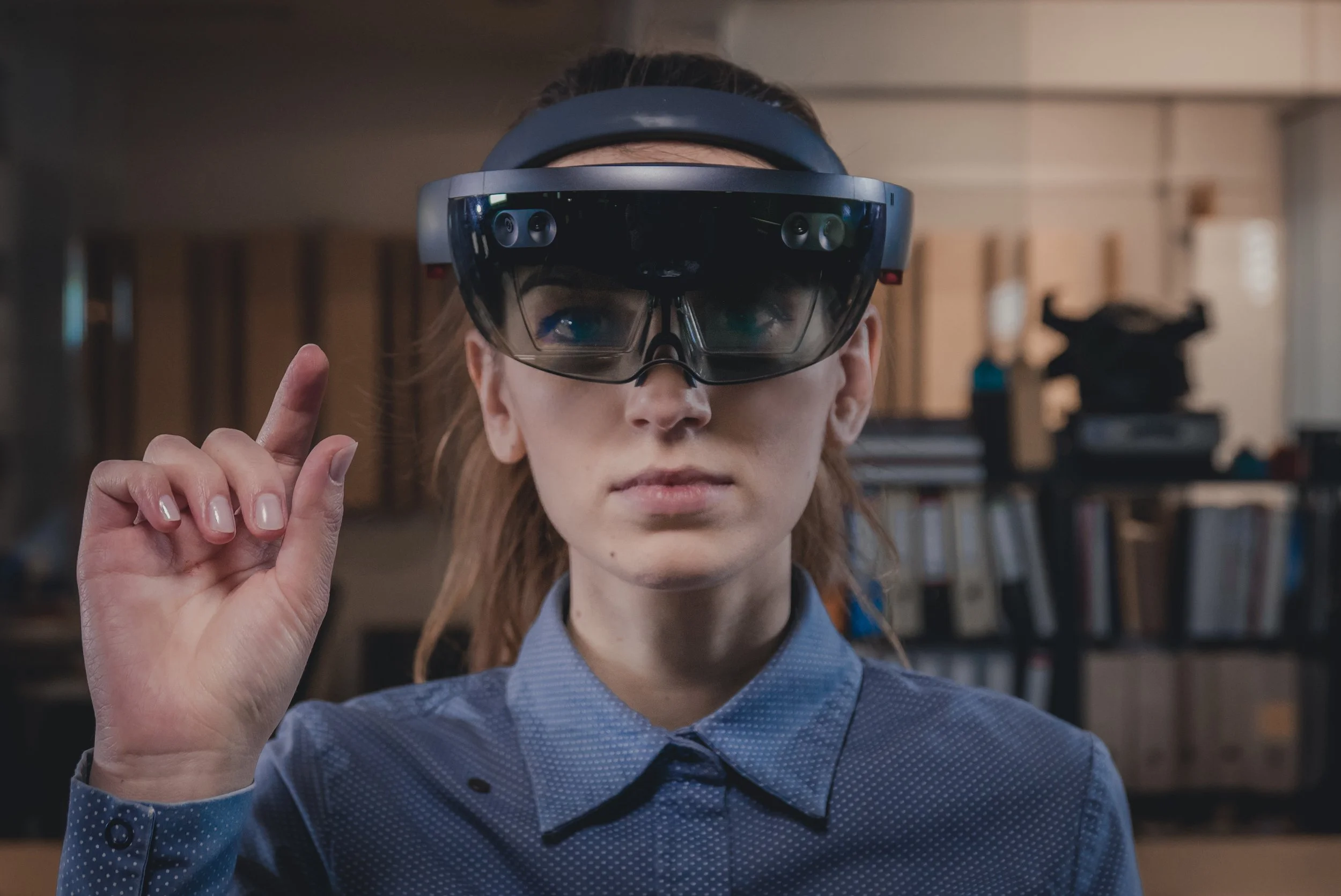A colleague and I have had a paper that we presented at an Asia Pacific Autism Conference some years ago just published in a Routledge textbook titled 'Gaming Disability: Disability Perspectives on Contemporary Video Games (2022)’.
Our work is presented in Chapter 9: A Spectrum of Real: Augmented Reality and Social Scaffolding.
This was us back in 2017 presenting the main model the paper is based on, our ‘GOCASI Model’:
In summary, we noted that the social skill benefits that were being observed in gamers who were playing games in real-world environments, notably at the time Pokemon Go, could be planned for by game developers in a three-phase approach:
1) Create a virtual, open-world game that provides opportunities for quality social interactions, including significant receptive and expressive communication prompts, and the opportunity to practice initiating greetings and play opportunities with others
2) Make sure there is an established online community space for gamers to talk further, share jokes, upload content and foster dialogue in a safe and supportive manner
3) Open up the virtual game into an augmented reality version where real-world engagement is promoted. Essentially, the game has now moved from being contained inside the screen to being mapped on the external, outside world. Communities of players are provided with the opportunity to meet up in real-world situations where they can play together and generalise the social and communication skills they had previously been practising in a virtual space.
This should not just be considered as applicable within neurodiverse domains, such as a way of fostering social practice opportunities for autistic individuals, but rather should be seen as a way of supporting friendships and real-world social communities in an age where these points of connection can be significantly lacking. When we wrote this paper and explored this model back in 2017 we didn’t quite know what was coming in terms of the further dislocation of real-world community, hijacked in part by an increased reliance on online spaces, but now with the innovations behind augmented reality finally starting to achieve impact, notably with Apple’s AR device not far away from being shared publically, there are timely benefits to further exploring these considerations.
The reference for the chapter is:
Smith, C., & Wild, H (2022). A Spectrum of Real: Augmented Reality and Social Scaffolding. In Gaming Disability (pp. 105-116). Routledge.
And the book can be accessed here:
If you would like me to send you a copy of our chapter, please don’t hesitate to reach out :-)


